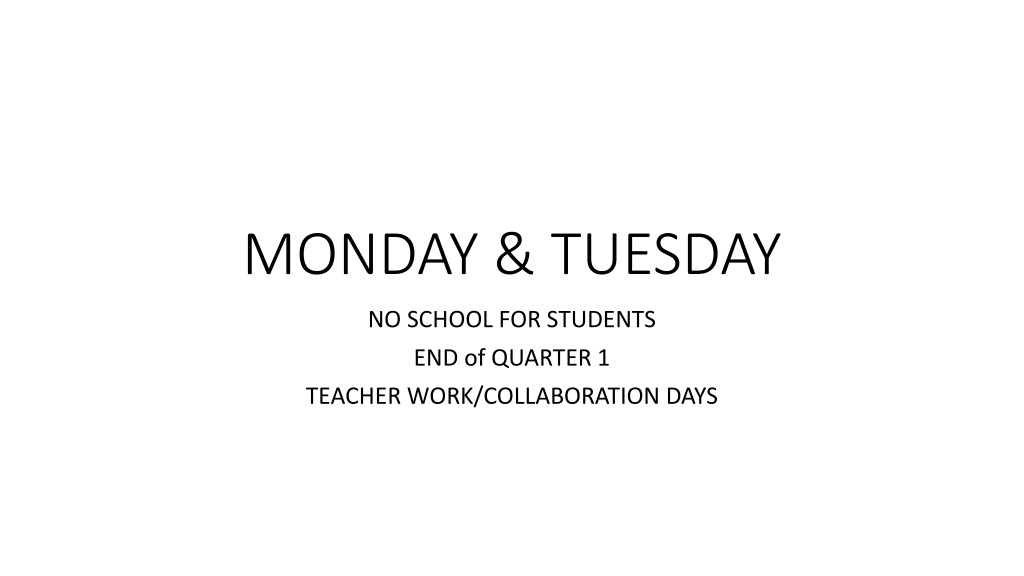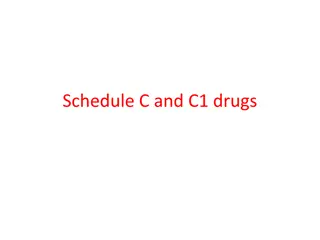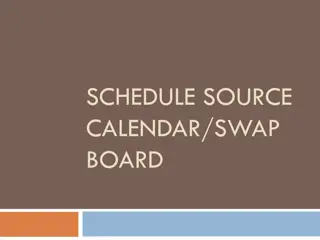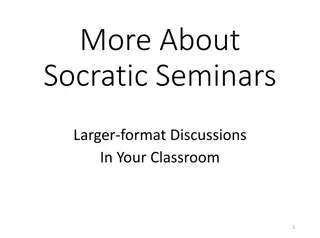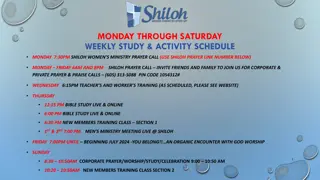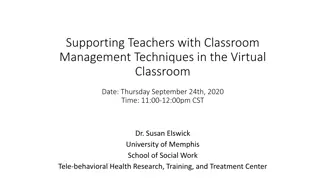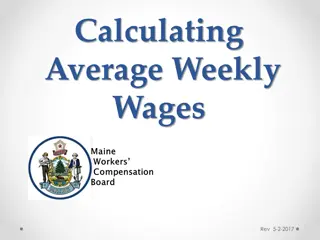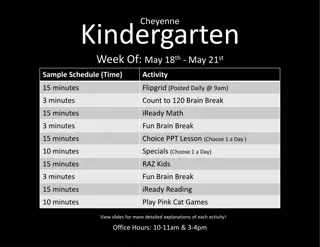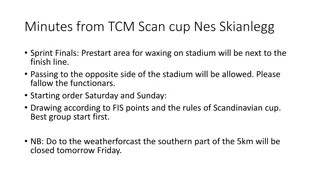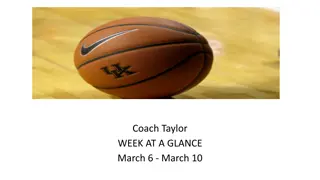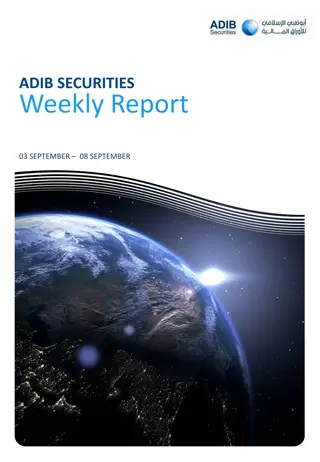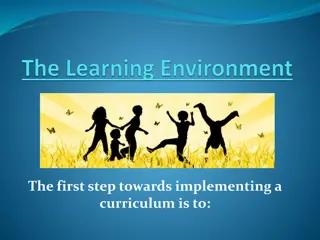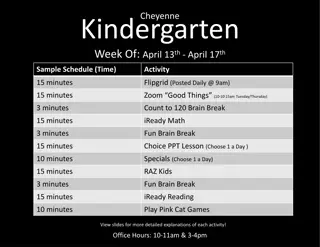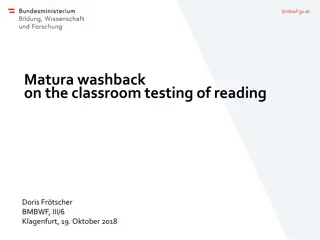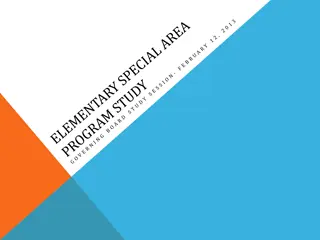Weekly Classroom Schedule and Academic Focus
The weekly schedule includes teacher work days on Monday and Tuesday, with students returning on Wednesday for housekeeping and homework assignments. Thursday focuses on a punctuation quiz and literature analysis tasks. The week concludes with activities related to reading, writing, and critical thinking in alignment with academic standards and development of essential skills.
Download Presentation

Please find below an Image/Link to download the presentation.
The content on the website is provided AS IS for your information and personal use only. It may not be sold, licensed, or shared on other websites without obtaining consent from the author.If you encounter any issues during the download, it is possible that the publisher has removed the file from their server.
You are allowed to download the files provided on this website for personal or commercial use, subject to the condition that they are used lawfully. All files are the property of their respective owners.
The content on the website is provided AS IS for your information and personal use only. It may not be sold, licensed, or shared on other websites without obtaining consent from the author.
E N D
Presentation Transcript
MONDAY & TUESDAY NO SCHOOL FOR STUDENTS END of QUARTER 1 TEACHER WORK/COLLABORATION DAYS
Hook, Housekeeping & Homework WEDNESDAY Anyone gone Friday? See me NOW!! How was ? How was your loooooong weekend? SHARE WITH YOUR PEERS HOMEWORK: Chapter 6 write response on back and be prepared with it at the beginning of class!
Past, Present, Future THURSDAY Punctuation Quiz Unit 3: Longer Fiction Their Eyes Were Watching God Chapter 1 Claim & Paragraph Due! Major Works Information Organizer Passage for Chapter 1 + Chapter 2 - focus on commentary Unit 3: Longer Fiction Their Eyes Were Watching God Passage for Chapter 2 - Revisit Peer Models + Returns Questions for Chapter 6 Finish your Major Works Information Organizer for TEWWG TEWWG characters & characterization The Dating Game!!
Unit 3: Longer Fiction 1 Life Is a Journey: TEWWG Colorado Academic Standards 2. Reading for All Purposes and 3. Writing & Composition Interpret and evaluate complex literature using various critical reading strategies. Understand how language influences the comprehension of narrative, argumentative, and informational texts. Write thoughtful, well-developed arguments that support knowledgeable and significant claims, anticipating and addressing the audience s values and biases Use a recursive writing process to produce, publish, and update individual or shared writing projects in response to ongoing feedback. Objective: to develop a claim that requires defense; to select relevant & sufficient evidence from the text to support the line of reasoning and provide commentary that establishes and explains relationships among textual evidence, the line of reasoning, and the thesis. Relevance: What we say and how we say it, our actions, our attitudes, and our appearances leave impressions on others; reading a wide range of literary texts enables us to build knowledge and to better understand the human experience! Interpretation of a text, supported by citing evidence, fosters reading skills and coherent thinking, speaking, and writing, which are priority skills for the workplace and postsecondary settings Essential Questions: Who are the characters? What are their perspectives & motives? How and/or why do they change or remain unchanged? What is the function of the setting? What function do significant events and/or related events serve in the plot? What is the function of conflict(s) in the text?
Activity: Develop & Apply I Do We Do You Do Purpose: to practice our 3 step close reading ritual = read for details, what? look for patterns, how and why? - come to a new understanding, so what? Tasks: Re-read and annotate the text Identify the specific textual details related to character, character perspective, character motives and changes in character Identify specific textual details that convey or reveal a setting Outcome: What patterns do you notice? Describe what specific textual details reveal about a character, that character s perspective, and that character s motives Explain the function of a character changing or remaining unchanged Describe specific textual details that convey or reveal a setting. Then, come to a new understanding (see prompt after excerpt) RETURNS =PIEE from Friday spend a few more minutes with your commentary for your two slices of
FYI: Throughout Their Eyes Were Watching God, Hurston employs a pear tree as a symbolic representation of Janie s hopes and aspirations as well as her toils and challenges as a woman and wife. CLAIM: In the Chapter 2 excerpt from Zora Neale Hurston s Their Eyes Were Watching God, Hurston s use of figurative language and imagery reveal Janie Crawford s discovery of her own sexuality. POINT/TOPIC SENTENCE: In this section, Hurston introduces the pear tree as a metaphor for Janie s life and her hopeful thoughts on the union of marriage. TEXTUAL EVIDENCE/ILLUSTRATION: At the age of 16, the pear tree called her to come gaze upon its mysterious transformation from barren brown stems to glistening leaf- buds. (10) What is the figure of speech? How is being used? What are the connotations behind words like called and gazed ? What images are conveyed? What senses are touched? What are the implications behind barren brown stems vs. glistening leaf-buds ? What does this represent (inherent qualities) vs. what might they represent here?
Continued CLAIM: In the Chapter 2 excerpt from Zora Neale Hurston s Their Eyes Were Watching God, Hurston s use of figurative language and imagery reveal Janie Crawford s discovery of her own sexuality. POINT/TOPIC SENTENCE: In this section, Hurston introduces the pear tree as a metaphor for Janie s life and her hopeful thoughts on the union of marriage. TEXTUAL EVIDENCE/ILLUSTRATION: Experiencing the alto chant of the visiting bees and the gold of the sun and the panting breath of the breeze, she expresses her first wish: Oh to be a pear tree with kissing bees singing of the beginning of the world (11). What figures of speech are used? What images are conveyed? What senses are touched? How are they being used? What is the purpose and effect? What are the connotations behind words like chant or gold or panting ? What are the implications behind Oh to be a pear tree ? What about kissing bees singing of the beginning of the world ? CONCLUSION:
Activity: Develop & Apply I Do We Do You Do Purpose: to practice our 3 step close reading ritual = read for details, what? look for patterns, how and why? - come to a new understanding, so what? Tasks: Re-read and annotate the text Identify the specific textual details related to character, character perspective, character motives and changes in character Identify specific textual details that convey or reveal a setting Outcome: What patterns do you notice? Describe what specific textual details reveal about a character, that character s perspective, and that character s motives Explain the function of a character changing or remaining unchanged Describe specific textual details that convey or reveal a setting. Then, come to a new understanding (see prompt after excerpt) RETURNS PIEE from Friday spend a few more minutes with your commentary for your two slices of NOW, LET S COMPARE OUR WORK TO THIS
Model Claim & Paragraph in its entirety In the Chapter 2 excerpt from Zora Neale Hurston s Their Eyes Were Watching God, Hurston s use of figurative language and imagery reveal Janie Crawford s discovery of her own sexuality. In this section, Hurston introduces the pear tree as a metaphor for Janie s life and her new, hopeful thoughts on the union of marriage. At the age of sixteen, the pear tree called her to come gaze upon its mysterious transformation from barren brown stems to glistening leaf-buds. (10) The personification of the pear tree, beckoning Janie, introduces the enticement and intensity that comes with the natural process of growth. Janie, too, is but a bud in spring; she is young and not yet full of the life experiences of womanhood. Thus, this passage represents a pivotal moment for the protagonist; she is becoming aware her own development from girl to woman. The tree mirrors not only her own body s development, through puberty ( barren brown to leaf-buds ), but her desire to grow and explore, to gaze on the possibilities of life. Experiencing the alto chant of the visiting bees and the gold of the sun and the panting breath of the breeze, she expresses her first wish: Oh to be a pear tree with kissing bees singing of the beginning of the world (11). This natural experience, the low, repetitive song of the bees and warmth of the sun, deeply stimulates Janie s senses and, in turn, the reader s. She is experiencing a sensually intoxicating epiphany of mind and body. Her concept of marriage is conceived through the consummation of bees pollinating the pear tree blossoms. Janie wants to experience the same relationship that she sees, one of harmony and intensity, a relationship that is not only symbiotic but an intense synergy. She yearns for her life to be filled with this natural passion. Seeming like the creation of humankind itself, the beginning of the world, the reader senses that Janie is about to experience a beautiful and momental shift in her life and is excited for this new beginning. The pear tree symbolizes Janie s awakening to an ideal relationship, one where love is an effortless union of individuals. How would you adjust your analysis? Make some notes now What could YOU share with this author?
Instruction: Obtain Purpose: to examine peer models for ideas on structuring claims and PIEE Tasks: Read at least 1 of the models labeled 1, 2, 3 Plus, read at least 1 more model, 1-6 provided = Read 3 total (at least one of 1, 2, or 3) Outcome: What patterns do you notice? What did your peers do well? What is an idea you can take away about claim, PIEE, analysis? DO NOT KEEP THE ESSAYS RETURN TO ME TO FILE Other returns
Review & Release Anyone need to see me individually about anything? What can you accomplish in your short weekend? HOMEWORK: Chapter 6 write response on back and be prepared with it at the beginning of class!
Hook, Housekeeping & Homework THURSDAY AP EXAM SIGN-UP Deadlines for ordering exams is this week! Please do the following: Initial and date if you are still taking the exam it s free and considered your final test assessment in May for this class If you are NOT taking the exam cross out Yes and write NO and the reason please (important information for AP data) e.g. moving or dropping class If you are NOT yet signed up you have until Friday to do so after that the classes are closed and no more exams will be ordered. HOMEWORK: Add to your Major Works Information Organizer Stylistic Devices, Symbols/Motifs, ONE Memorable Quote, ONE Theme (see handout) While the AP Exam List is circulating, see the next slide
Hook, Housekeeping & Homework THURSDAY Nanny says, "De nigger woman is de mule uh de world" (Hurston 14). A mule is the offspring of a male donkey (jack) and a female horse (mare).[1][2]Horses and donkeys are different species, with different numbers of chromosomes. Of the two F1 hybrids (first generation hybrids) between these two species, a mule is easier to obtain than a hinny, which is the offspring of a female donkey (jenny) and a male horse (stallion). A female mule that has estrus cycles and thus, in theory, could carry a fetus, is called a "molly" or "Molly mule", though the term is sometimes used to refer to female mules in general. Pregnancy is rare, but can occasionally occur naturally as well as through embryo transfer. HOMEWORK: Add to your Major Works Information Organizer Stylistic Devices, Symbols/Motifs, ONE Memorable Quote, ONE Theme (see handout)
Past, Present, Future THURSDAY Unit 3: Longer Fiction Their Eyes Were Watching God Passage for Chapter 2 - Revisit Peer Models + Returns AP Exam Sign-up Unit 3: Longer Fiction Their Eyes Were Watching God Questions for Chapter 6 Passage for Chapter 6 with prompt Finish your Major Works Information Organizer for TEWWG TEWWG characters & characterization The Dating Game!!
Unit 3: Longer Fiction 1 Life Is a Journey: TEWWG Colorado Academic Standards 2. Reading for All Purposes and 3. Writing & Composition Interpret and evaluate complex literature using various critical reading strategies. Understand how language influences the comprehension of narrative, argumentative, and informational texts. Write thoughtful, well-developed arguments that support knowledgeable and significant claims, anticipating and addressing the audience s values and biases Use a recursive writing process to produce, publish, and update individual or shared writing projects in response to ongoing feedback. Objective: to develop a claim that requires defense; to select relevant & sufficient evidence from the text to support the line of reasoning and provide commentary that establishes and explains relationships among textual evidence, the line of reasoning, and the thesis. Relevance: What we say and how we say it, our actions, our attitudes, and our appearances leave impressions on others; reading a wide range of literary texts enables us to build knowledge and to better understand the human experience! Interpretation of a text, supported by citing evidence, fosters reading skills and coherent thinking, speaking, and writing, which are priority skills for the workplace and postsecondary settings Essential Questions: Who are the characters? What are their perspectives & motives? How and/or why do they change or remain unchanged? What is the function of the setting? What function do significant events and/or related events serve in the plot? What is the function of conflict(s) in the text?
Activity: Develop & Apply Their Eyes Were Watching God - CHAPTER SIX Purpose: to review Chapter 6, specifically examining a plot event (including conflict & symbol) within the novel as well as characters/characterization (motives & perspectives, changed/unchanged) Tasks: Small Group Discussion (10 minutes) Select a set of bulleted questions (4 variations on a theme) from the first section to re-examine Chapter 6 (and the significance of Matt Bonner s mule) be prepared to share with a larger group Select two sets of bulleted questions from the second section to re-examine Chapter 6 (Jody & Janie) be prepared to share with a larger group Finally, use the last set of bulleted questions to re-examine Chapter 6 (freedom) be prepared to share with a larger group Outcome: Small Group Discussion (15 minutes) to prepare for Large Group Discussion Return to your Unit Guide Skill Categories & Key Questions for characters and plot/structure. What new understandings do you have? What do Chapter 6 details reveal about character motives? What about character perspectives? Are there competing values, whether internal or external, that are revealed? What do you notice about characters changing or remaining unchanged? What is the function of a plot episode in this chapter in the overall plot of the story? How is it related to the development of characters? What additional conflicts are introduced that heighten the primary conflicts(s) in the novel?
Review & Release Add to your Major Works Information Organizer Stylistic Devices Symbols/Motifs ONE Memorable Quote etc. Theme (see handout)
